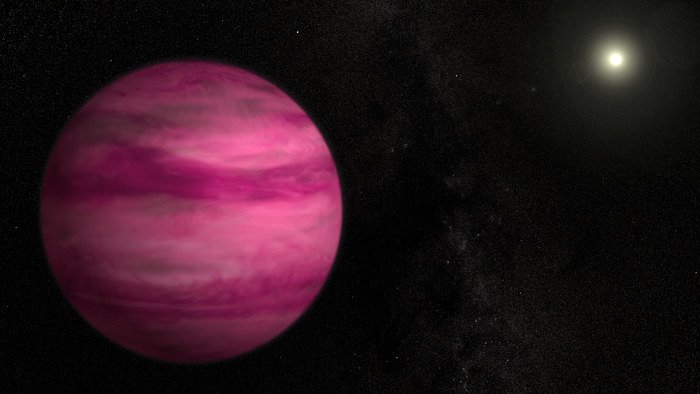Artists impression of GJ 504b. Glowing a dark magenta, the newly discovered exoplanet weighs in with about four times Jupiter's mass, making it the lowest-mass planet ever directly imaged around a star like the sun. Credit: NASA's Goddard Space Flight Center/S. Wiessinger
GREENBELT, Md., Aug. 5 (UPI) -- Using a telescope in Hawaii, astronomers say they've observed the lowest-mass planet ever detected around a star like the sun using direct imaging techniques.
Using infrared data from the Subaru Telescope, they've determined the distant planet weighs in at about four times Jupiter's mass, NASA reported Monday.
"If we could travel to this giant planet, we would see a world still glowing from the heat of its formation with a color reminiscent of a dark cherry blossom, a dull magenta," said Michael McElwain, a member of the discovery team at NASA's Goddard Space Flight Center in Greenbelt, Md. "Our near-infrared camera reveals that its color is much more blue than other imaged planets, which may indicate that its atmosphere has fewer clouds."
The planet, GJ 504b, orbits its star at nearly nine times the distance Jupiter orbits our sun, which poses a challenge to theoretical ideas of how giant planets form, astronomers said.
Under the most widely accepted model of planet formation, known as the core-accretion model, Jupiter-like planets get their start in the gas-rich debris disk that surrounds a young star at a fairly close distance.
GJ 504b lies at a distance from its parent star more than 43 times the average distance of our Earth to the sun, far beyond the point where the core-accretion model should account for it.
"This is among the hardest planets to explain in a traditional planet-formation framework," team member Markus Janson, a Hubble postdoctoral fellow at Princeton University, said. "Its discovery implies that we need to seriously consider alternative formation theories, or perhaps to reassess some of the basic assumptions in the core-accretion theory."















